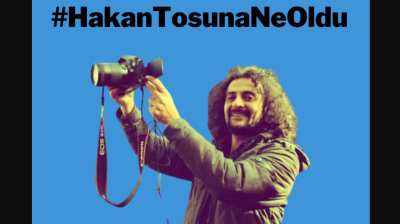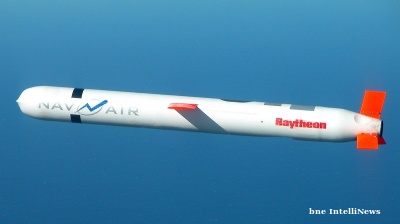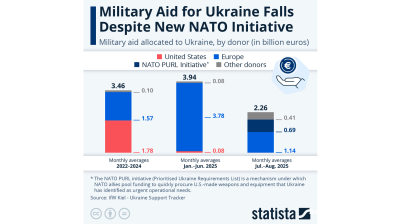As its poll numbers drop to new lows, Putin-supporting United Russia Party faces the prospect of losing its absolute hold on power in September’s elections. Ahead of upcoming elections, recent polls have the faction hovering at around 25-35% support, far short of previous highs.
In 2016, the ruling party received 54.20% of the vote, according to official results, giving it a supermajority of seats. But the popularity of United Russia has declined significantly in the last three years as the economy stagnates and has been battered by economic shocks.
In spring 2018, around the time of the country’s presidential election, the party was polling at about 50%, well ahead of its nearest rival, the Communist Party of the Russian Federation (KPRF), which remained in the mid-teens.
Russian President Vladimir Putin has hurt the party’s popularity with a few painful reforms, including increasing VAT taxes by 2%, the main revenue generator for the government, and extending the retirement cut-off by two years, both of which immediately hurt United Russia’s poll numbers and resulted in the party losing an increased number of regional elections. At that time, United Russia polled at around 35% (or around 40% when excluding those who said they ‘won’t vote’).
Going into the general election slated for September 17 United Russia’s polling results are even worse. In August alone, seven surveys from various companies have put the party at or below 30%, and under 40% when excluding those who plan to abstain – far short of what is required for a supermajority, reports RT.
However, analysts still assume that by rolling out its “administrative resources” the party will still secure a win. The Russian Parliament has 450 seats, and holding two-thirds of it – 300 seats – is considered a constitutional majority. Half of the benches are elected by proportional representation with a 5% electoral threshold, with the remaining contests taking place in single-member constituencies.
According to Boris Makarenko, the president of the Center for Political Technologies, the party is guaranteed to win 190 first-past-the-post districts and more than 100 seats from proportional representation.
“That would guarantee it a simple majority. And it may or may not get a constitutional majority,” he said, as cited by RT.
While Russia’s elections are clearly fixed, the issue for the Kremlin is it needs to win as many genuine votes as it can. Simply making up the result as is common in Central Asia is not an option, as it would end in widespread protest. While the Kremlin can tinker at the edges to ensure it passes a crucial threshold like winning a clear majority, political scientists say that if the Kremlin attempts to add more than 10% to the vote then that will lead to protests.
That is what happened in 2011 when the Kremlin added some 12% to United Russia’s count, according to statisticians who studied the voting patterns. Some of the biggest mass protests erupted as a result, with crowds of over 100,000 gathering in the Bolotnaya park immediately across the river from the Kremlin. In Belarus, where incumbent President Alexander Lukashenko is believed to have increased his win in the disputed August 9 presidential elections last year from circa 35% to 80%, mass rioting broke out only hours after the polls closed on the same day and protests have continued for more than a year.
Russia has a hybrid system that is partially democratic as Putin needs genuine support, but at the same time he controls all the levers of power. He cannot allow the gap between the real votes and those the Kremlin injected into the system to become too wide.
And Putin does enjoy the support of roughly half the population that are partly grateful for the stability and prosperity he brought in the boom years in the 1990s, but who also support him because they see no alternative.
Another way of seeing it is the electorate in Ukraine, where a political pleurisy and a vibrant civil society are fighting to make their country better. Russia has neither of those things and the voters are simply fighting to prevent things from getting worse; to protect the hard won gains they have made in the last two decades.
Regional battles and opposition parties
Aside from the backlash of increasing the pension age, United Russia is also facing uphill battles in many regions as its support across the country is uneven.
According to the Scientific and Methodological Center for Rural Youth Problems, which conducted a poll at the end of July, there is significant variance in the ruling party’s popularity. In Far Eastern Khabarovsk, United Russia polled just 12%, a long way behind 36% for the far-right LDPR, for which the China-border region is a stronghold. The rest of the Far East – such as Buryatia (19%), Zabaikalsky Region (22%) and Primorsky (25%) – also shows significantly less support than the national average for the ruling faction. In other parts of the country, such as Muslim-majority Chechnya (83%) and Dagestan (69%), as well as mainly Buddhist Tuva (82%), the poorest region in Russia, it is significantly more popular than every other party combined.
The two best-supported opposition parties also face regional variance, and their struggle to make an impact on the national level is a significant handicap.
The biggest opposition group is the KPRF and relatively popular in the industrial centre of the country, enjoying 38% of support in Ulyanovsk and significant backing in Buryatia, Khakassia and Omsk. Nationwide, it polls at 16.2%. In recent months, the Communists have branded themselves as the anti-United Russia option, expending significant effort to distance themselves from the current political elites, and have vocally opposed the unpopular pension reforms. They have also come out against “political repression,” and party leader Gennady Zyuganov has accused Putin of turning the country into a “fascist” state.
Ironically the KPRF has been the main beneficiary of jailed anti-corruption activist and opposition politician Alexei Navalny “smart voting” tactics designed to unseat United Russia. The idea is to use the opposition’s organisational power to rally voters behind any candidate with a chance of beating the United Russia candidate – and that is usually a communist candidate. The swelling support for the party has caused problems within the KPRF, as some members see the possibility of increasing the party’s political power and these elements are pushing for internal reforms. Until now the KPRF has been content to be part of the “systemic opposition” that is in the Duma, formally in opposition to the ruling United Russia but in effect toeing the government’s line on all major issues.
The other main systemic opposition party is far-right popularist Liberal Democratic Party of Russia (LDPR), led by firebrand political veteran Vladimir Zhirinovsky, who is famous for his fiery rhetoric and bizarre antics. Despite his reputation of being a clown, Zhirinovsky remains by far the most popular opposition figure in Russia. According to the Scientific and Methodological Center for Rural Youth Problems poll, the LDPR is polling at 13.6%. Although the party has significant backing in the Far East, it faces challenges in the south of the country. For example, in Chechnya and North Ossetia, both in the northern Caucasus, they are supported by so few people that there is no data at all for these areas, which is probably due to its openly racist agenda.
The next most popular party, Fair Russia, which is the closest the Duma comes to a liberal opposition group, polls below double figures nationwide.
It has been clear for a long time to the Kremlin that United Russia is in trouble in these elections, but the Kremlin has been unable to engineer a solution and instead has turned to open repression. The first half of this year has been marred by the Kremlin campaign to arrest, outlaw or simply shutter as many of the opposition voices as it can. The gloves have come off as the Kremlin attempts to crowbar its party into power.
With the poll less than a month away the Kremlin has rolled out the big guns in a media blitz to win voters' support. Putin himself has been stumping at the party’s congress as well as Foreign Minister Sergey Lavrov, and Defence Minister Sergey Shoigu, who is one of the most popular figures in the country after Putin himself. Lavrov and Shoigu will lead the national party list during the election. The nominal head of United Russia former Prime Minister Dmitry Medvedev has not featured either in the campaign nor in the party lists as he is so widely despised for excessive corruption, exposed by Navalny.
Putin is not officially a member of United Russia, but the party has branded itself as ‘Team Putin’, hoping that some of Putin’s sky-high approval ratings will rub off on them.
Features

Journalist beaten to death in Istanbul as security conditions in Turkey rapidly deteriorate
Publisher, meanwhile, is shot in leg. Reporters regularly experience violence, judicial harassment and media lynching.

Agentic AI becomes South Korea’s next big tech battleground
As countries race to define their roles in the AI era, South Korea's tech giants are now embracing “agentic AI”, a next-generation form of AI that acts autonomously to complete goals, not just respond to commands.

Iran's capital Tehran showcases new "Virgin Mary" Metro station
Tehran's new Maryam metro station honours Virgin Mary with architecture blending Armenian and Iranian design elements in new push by Islamic Republic

Indonesia’s $80bn giant seawall
Indonesia’s ambition to build a colossal seawall along the northern coastline of Java has ignited both hope and heated debate. Valued at around $80bn, the project aims to safeguard the island’s coastal cities from tidal floods and erosion.




